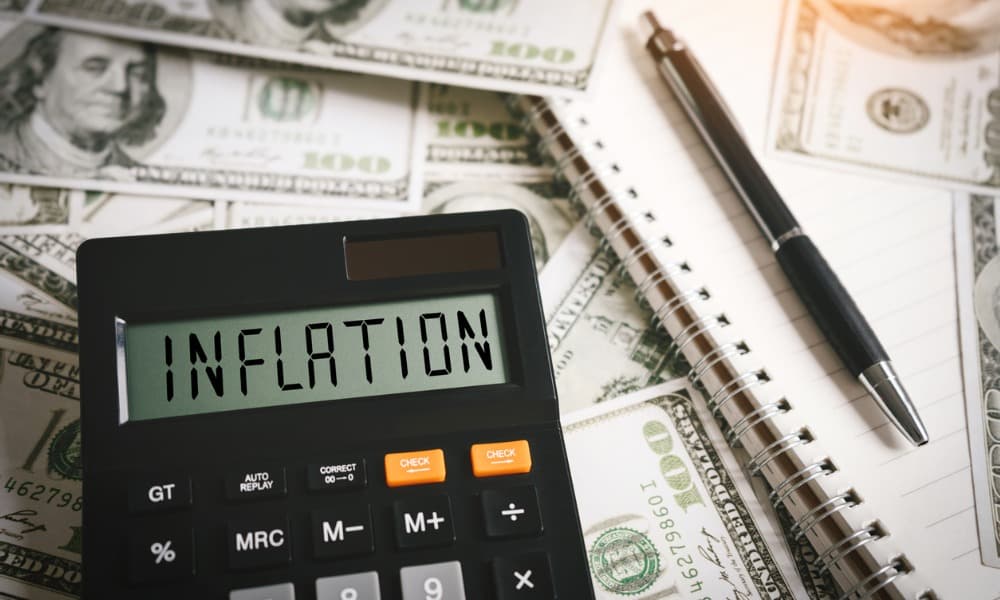Insurance costs are increasing, but the reasons are complicated.
Key takeaways:
- Car insurance rates are on the rise, and inflation is partially to blame.
- Insurance vendors must increase rates because everything else is getting more expensive.
- There are still some ways to secure more reasonably priced insurance policies.
Goods and services are almost universally more expensive than this time last year as inflation takes hold across the globe. The annual inflation rate in the United States was 8.52% in July 2022, up significantly from the 5.37% it reached in July 2021 and the long-term average of 3.26%.
Insurance premiums aren’t immune to inflation, either, as estimates suggest rates could increase by an average of 4.9% in 2022, with New York seeing a significant 4% increase this year.
However, your insurance rates won’t necessarily rise perfectly in sync with our inflationary environment. The dynamic is a little more complicated because the increasing costs of the services insurance agencies use to restore or replace vehicles create a trickle-down effect.
Are car insurance rates immune to inflation? Here’s an in-depth look at this question and some reasons why insurance costs are likely to increase as inflation remains high.
Increasing repair costs
Perhaps the leading reason for inflation-related insurance rate increases is the cost of repairs.
When a vehicle is in an accident and requires work, the insurance company typically handles the bill beyond a deductible. And auto repair shops are feeling the pinch of inflation as their expenses increase. Their landlords could be raising the rent in response to inflation, and the parts and materials they use daily are certainly more expensive.
Local auto-body and mechanic shops are also spending more on electricity, heating, cooling, and, potentially, wages because of inflation, forcing them to increase their estimates to keep up with costs. Thus, insurance companies will likely raise rates to compensate for the extra money these services cost them.
The expense of replacing a vehicle
Another inflationary factor influencing your insurance rates is the increasing cost of replacement vehicles.
When your car is beyond repair after an accident, the insurance agency will often cut a check for either the replacement or fair-market value of a vehicle. And new and used cars are more expensive than ever, forcing providers to pay more when a damaged car is a write-off. This scenario compels the insurance company to increase your premiums to compensate for the increased costs, of course.
Supply chain issues
Beyond other reasons for inflation, supply chain issues increase the cost of vehicle repairs and replacements because the necessary materials simply aren’t available.
For instance, the lengthy semiconductor chip shortage forced some car manufacturers to slow down production in the early days of the pandemic. Unfortunately, the industry still hasn’t caught up, as manufacturers have a significant backlog forcing vehicle manufacturers to ration chips. The result is fewer vehicles on the market, driving an increase in car prices.
Supply chain problems are creating challenges in tracking down parts, too. These parts would already be more expensive because of inflation, but their scarcity adds even more expense for mechanics, driving their prices up even further.
Hopefully, these supply chain issues are short-term, and they’re worth monitoring because of the havoc they could create for insurance companies and their rates.
Other factors influencing insurance rates
Increasing your coverage or decreasing your deductible will influence the cost of your car insurance, of course. If you changed your policy to provide additional coverage when rates were lower, reviewing it and making the necessary adjustments now could be worth the effort.
Your insurance agency will also seek information on how you use your vehicle to determine the risk. Those who drive their personal vehicles for work or commute long distances represent a greater risk and will see higher rates as a result.
How to secure the best possible insurance rates
Inflation is a significant issue, and it’s tough to envision a world where costs return to something like their historic norms anytime soon. However, there are some steps you can take to secure the lowest possible car insurance rates in the meantime.
First, it always pays to shop around a bit. Your current insurance provider isn’t necessarily offering you the best price available, so seeking quotes from multiple vendors is a great way to uncover some discounts.
You also may be able to save money by driving less often and finding a policy that takes this into account. Taking public transit to and from work or working from home whenever possible could qualify you for a low-mileage or pay-per-mile policy that will lower your rates.
Your credit score can also influence insurance rates. It will take some time to improve a poor credit score, but it’s worth mentioning its impact on policy costs.
It’s also possible to take some proactive steps like investing in a defensive driving course, downgrading your car to something less expensive, or bundling your car insurance with your life, home, or renters policy to save some cash. Lower insurance rates are available despite this inflationary environment; you just have to find them.
Compare providers to find the right policy
You’ll encounter many providers as you shop around for lower car insurance rates to beat inflation. Seeking multiple quotes is a positive thing and gives you the best possible chance of saving some money when renewing your insurance.
The team at NICRIS Insurance can provide you with a personalized auto insurance quote. Contact us today for a free insurance review.

